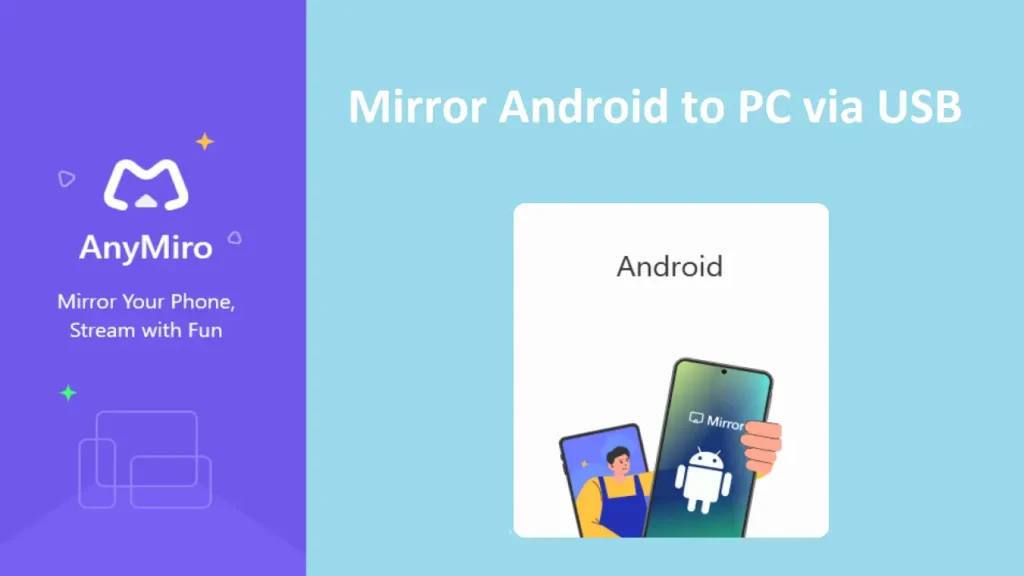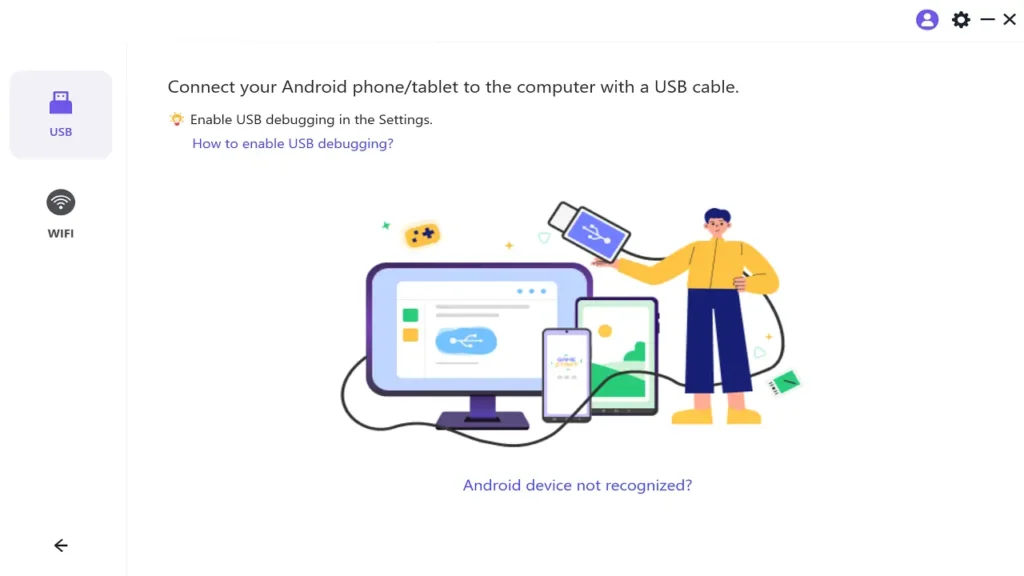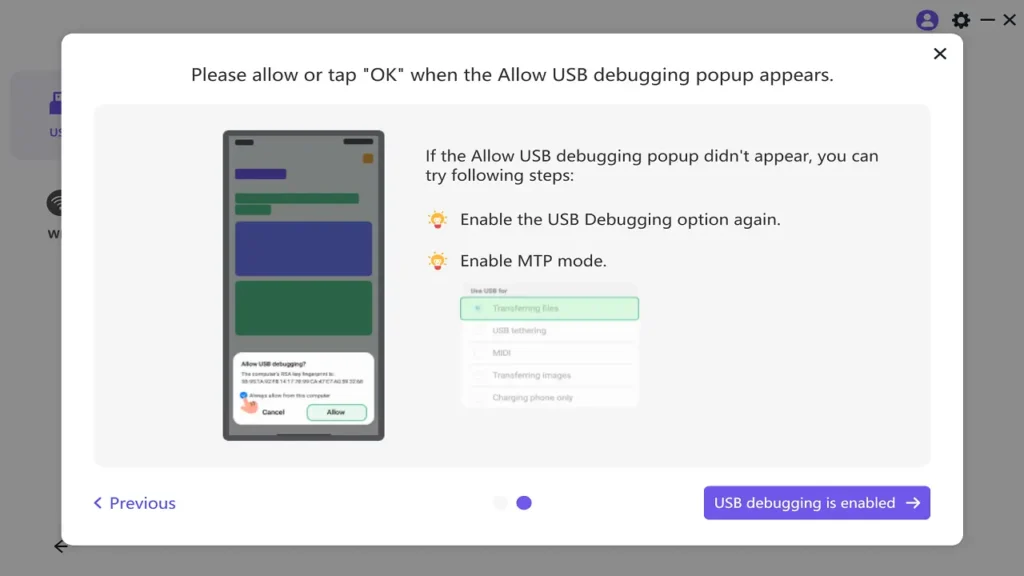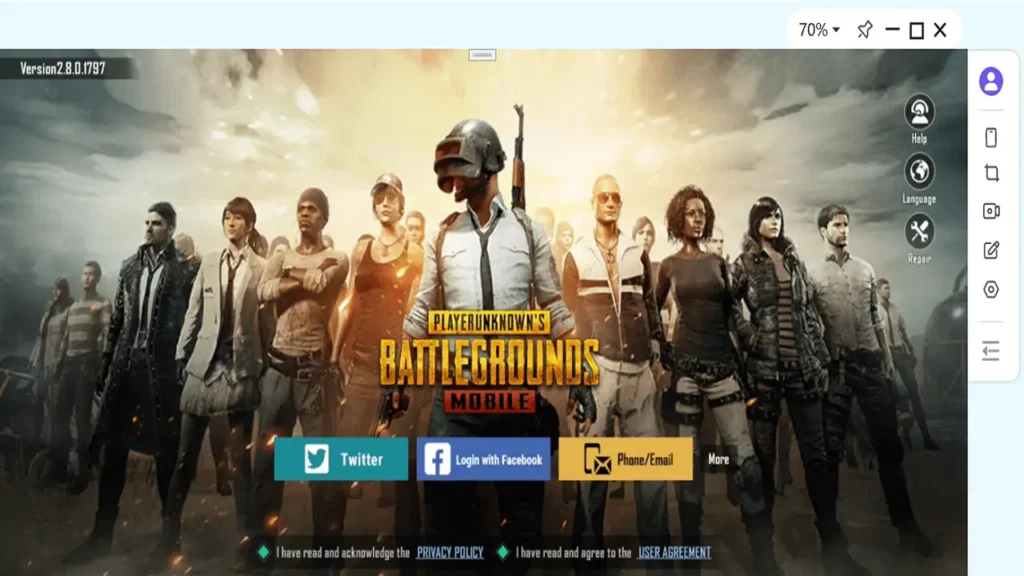Mirroring your Android screen to your PC can be incredibly useful. Whether you want to show off a presentation, play mobile games on a bigger screen, or watch videos from your phone on your computer, screen mirroring makes it possible. In this guide, I’ll Walk you through the easiest way to mirror Android to a PC using a USB connection, which is faster and more stable than wireless options.
We’ll use a tool called AnyMiro for this, as it provides a smooth, no-lag experience and includes audio support.

Table of Contents
Why Mirror Your Android to a PC?
Screen mirroring lets you display your Android screen on a PC, which is helpful in lots of scenarios:
- Gaming: Play your mobile games on a larger screen without squinting at small details.
- Presentations and Demos: Quickly share slides or app demonstrations on your PC screen, perfect for classrooms or meetings.
- Watching Media: Easily show your mobile videos, photos, or streaming apps on your PC for a better viewing experience.
However, mirroring without dedicated software can be frustrating due to poor quality and inconsistent connectivity. That’s where AnyMiro comes in handy, as it’s designed specifically to make screen mirroring smooth and high-quality.
The Challenges of Basic Screen Mirroring (and How AnyMiro Solves Them)
If you’ve tried to mirror your Android to a PC using default settings, you’ve likely faced some challenges:
- Low Resolution and Poor Image Quality: Built-in mirroring often downgrades the video quality, making it look pixelated on your PC screen.
- Unstable Connection: Without the right tools, you might experience lag, interruptions, or even sudden disconnections.
- No Audio Support: Most basic mirroring methods only send video, not audio, to your PC.
Using AnyMiro, you get a seamless experience with high resolution, a stable connection, and even audio mirroring support, which makes it ideal for anything from work presentations to gaming.
How to Mirror Android to PC via USB Using AnyMiro
Before You Start, You’ll Need:
- A USB Cable: A stable, good-quality USB cable to connect your Android to your PC.
- AnyMiro App: Download and install AnyMiro on your PC. You can find it on AnyMiro’s official website.
- Enable USB Debugging on Android:
- Go to Settings > About Phone.
- Tap Build Number seven times to activate Developer Options.
- Go back to Settings > Developer Options > USB Debugging, and turn it on.
Step-by-Step: Mirror Your Android to PC Using AnyMiro
Step 1: Open AnyMiro: Start the AnyMiro app on your PC.

Step 2: Connect Your Android Device: Plug your Android phone into the PC using a USB cable.

Step 3: Allow USB Debugging: You may see a pop-up on your Android asking for permission to allow USB debugging. Select “Allow.”

Step 4: Start Mirroring: Let mirroring connection establish. Your Android screen should now appear on your PC!

This setup lets you enjoy high-quality mirroring with little to no delay, which is perfect for gaming, presentations, or any activity that needs a real-time display.
Why USB Screen Mirroring is Better Than Wireless
While wireless screen mirroring may sound convenient, USB has some clear advantages:
- Stable and Lag-Free: A USB connection provides a strong link that’s unlikely to disconnect or lag during use.
- Higher Resolution: Mirroring via USB typically allows for clearer, sharper visuals.
- Perfect Audio Sync: Unlike many wireless solutions, USB mirroring keeps audio and video perfectly in sync, so you can hear and see everything as it’s happening.
Why AnyMiro is the Best Choice for Android Screen Mirroring
Here’s why AnyMiro stands out from other mirroring apps:
- Smooth, Stable Connection: No more lag or interruptions; AnyMiro maintains a stable connection even if you’re using it for hours.
- Simple to Use: The app is designed with an easy-to-navigate interface. Plus, you can use it over USB or WiFi, making it flexible.
- 4K High Resolution: Expect crystal-clear visuals with AnyMiro’s high-resolution support, which mirrors your Android screen in its full quality.
- Cross-Platform Mirroring: AnyMiro lets you mirror not just Android to Windows, but also Android to Mac, iOS to Windows, and even iOS to Mac.
- Extra Features: AnyMiro includes screen recording, screenshots, and real-time annotations, which add a lot of value if you’re using it for work or presentations.
- Audio Mirroring: AnyMiro allows you to mirror both audio and video, which is rare among screen-mirroring apps, ensuring a complete experience.
Free Trial: You can try AnyMiro for free to see how well it fits your needs before committing to a paid plan.
FAQs
AnyMiro offers a free trial, allowing you to test its basic features and get a feel for the app. However, for unlimited use and access to advanced features, such as 4K resolution, you may need to subscribe to a paid plan.
Yes, AnyMiro supports both USB and WiFi mirroring. While USB mirroring offers better stability and higher quality, WiFi is also available if you need wireless flexibility.
Absolutely! AnyMiro allows you to mirror both your screen’s video and audio to your PC. This feature is especially helpful if you’re watching videos, playing games, or giving presentations with sound.
Yes, USB mirroring generally offers a faster and more stable connection with minimal to no lag compared to wireless. This makes USB ideal for activities requiring real-time performance, like gaming or presentations.
Final Thoughts
Mirroring your Android screen to a PC through USB offers the best quality, stability, and features. With AnyMiro, you get an easy-to-use app that provides high-resolution visuals, smooth performance, and full audio-video sync.
It’s a great option for anyone looking to enjoy gaming, presentations, or media viewing on a larger screen. Give AnyMiro a try and enjoy screen mirroring at its best!
